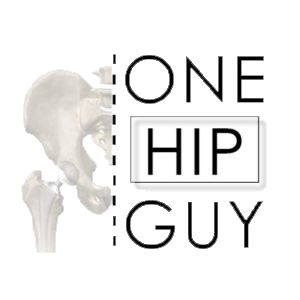For anyone who had experienced a joint replacement one of best things you can do is to get moving. Once you have been given the green light to function at a normal everyday level then incorporating daily walking activities is crucial.
For anyone who has never experienced any joint issues this applies to you so in essence this message applies to everyone.
We live in world today where we can count calories, count sleep patterns and just about anything. Perhaps some of it goes too far, however I believe the ability to count how many steps you take on a daily basis is a good measurement or guide to follow. Standard convention suggests that the average person should strive to get around 10,000 steps a day.
When I go to the gym I walk on the running track and also use the elliptical or treadmill. After a workout I have almost 5,000 steps already in. During the nicer days of winter I will go for a walk or get out by biking, golfing, etc. You can easily get to that magic number of 10,000 steps.
Part of what makes a goal of 10,000 steps a day so important is that it gets you up and out of your chair. Sitting for too long has been found to increase your risk of death from virtually all health problems, from Type II Diabetes and heart disease to cancer and all-cause mortality. In fact, chronic sitting has a mortality rate similar to smoking. The simplest way to avoid these negative health effects is to strive to sit less – ideally for less than three hours a day. A standing desk can help with this, as can frequent walking.
According to Katy Bowman, a scientist and author of the book: Move Your DNA: Restore Your Health Through Natural Movement:
“Walking is a superfood. It’s the defining movement of a human.”
Walking is an essential movement that needs to be done everyday. For someone that is not fit this will be considered exercise for them, however once someone is fit they will need to have other activities that will help them stay that way. Weight bearing exercise, HIIT (High Intensity Interval Training) , Yoga, Pilates, running, hiking, etc.
This winter I have gone hiking with my wife Susanne and it has been fun to get out and get some great exercise in. We have hiked in some of the areas near Phoenix. Places like Piestewa Peak, North Mountain, South Mountain, and Camelback to name a few. No matter where you live there are some hiking trails nearby. Nearby where I live in Canada we have a nature trail. There are all sorts of wildlife one can see along the way which makes the hike/walk even more fun.
Challenge yourself! What I found is that I can do just about anything since my surgery 3 1/2 years ago. You can too!
Go for walks around the neighborhood and meet your neighbors! Walk to the grocery store if its close by, walk to church, walk to the mailbox, take you dog for a long walk instead of a short one. The dog park is great for the dog but a walk is better for both of you! Park your car further from the front door at the mall. It all counts.
The benefits to your health are immeasurable!
It can reduce incidence of Type II Diabetes, it can improve mood, it can lower you heart rate.
The human body is made to move. The average person sits 8-10 hours a day! Those tight hamstrings and quads are from sitting all day. That lower back problem is because you hamstrings and quads are tight. It becomes a cascade of problems.
So the message is clear…get out and get moving. If you can take those shoes off and walk in the grass or on the beach! You will absorb free electrons from the earth known as grounding. These electrons have powerful antioxidants that help to reduce inflammation.
Don’t get too caught up on whether you hit that 10,000 step mark. Remember it is a guide or target that is good for you. It is good for joints and really good for those of us who have experienced joint replacement!
Yours in health,
John – One Hip Guy
